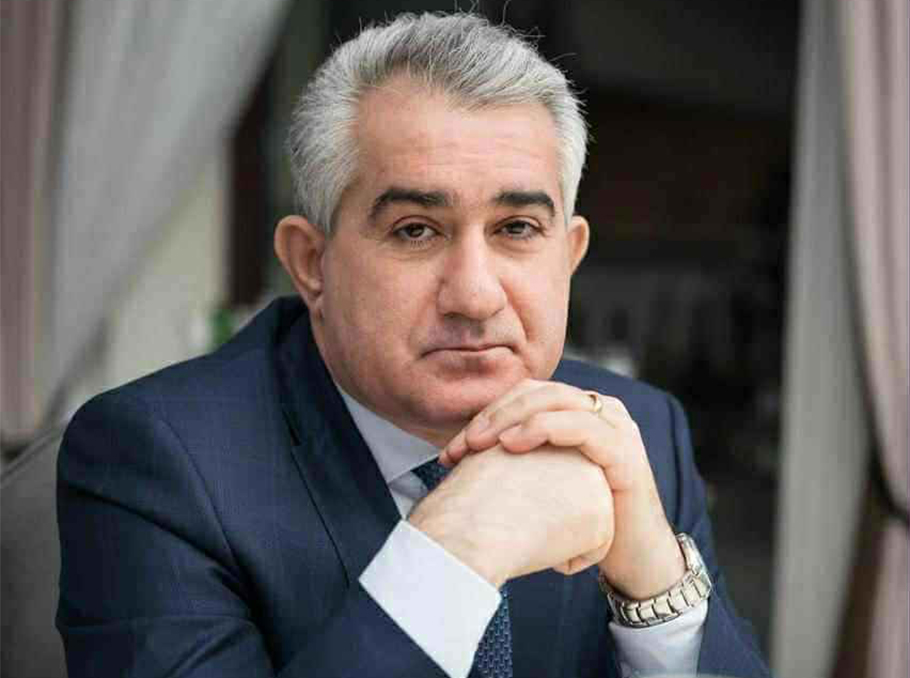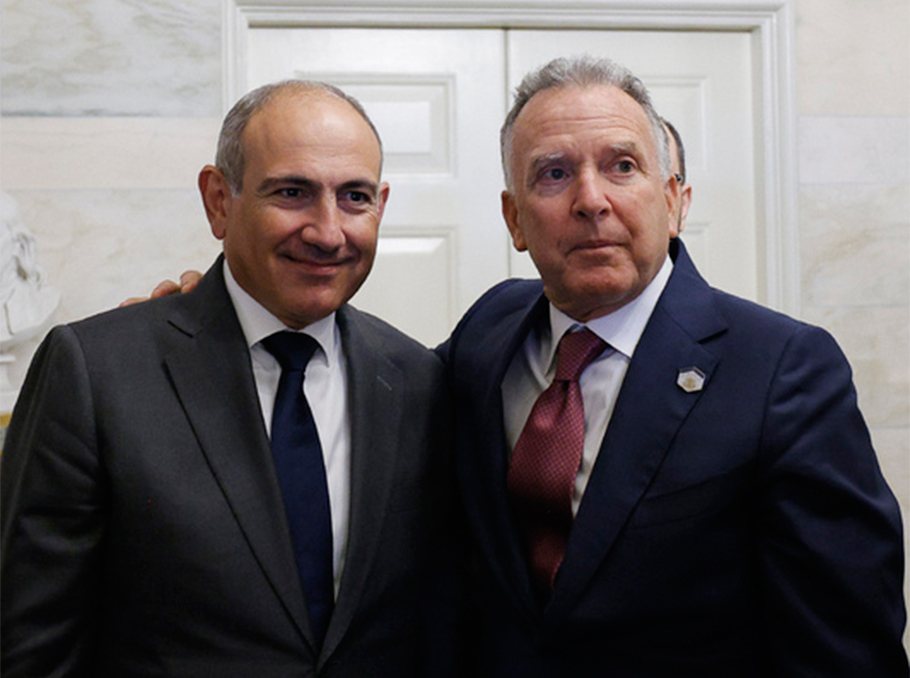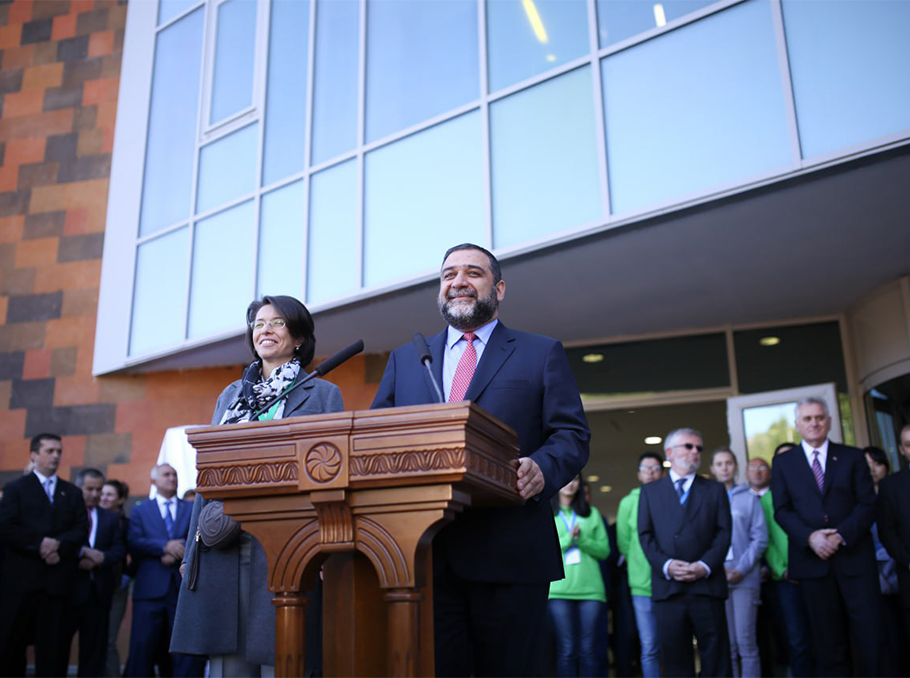Albert GRIGORYAN
Senior Business Developer, Former Country Delegate & Director of Engie Representations in Russia and Ukraine
The experience of Armenian repatriates during the Soviet era, that of post-Soviet immigrants in France, and the contrasts between the French and Armenian educational systems - enriched by personal and family journeys - reveal some essential truths:
Repatriation: Between Symbolic Welcome and Limited Recognition
The successive waves of repatriation beginning in 1946 brought to Armenia families whose outlook was naturally turned outward. Carried by transnational family ties, these repatriates brought with them a distinct cultural and behavioral sensitivity. Their presence sparked admiration, curiosity, but also at times reticence, even a sense of threat. They occupied a paradoxical place: returning home without being fully welcomed.
The Soviet and then post-Soviet political structures offered them symbolic acknowledgment, but limited recognition. Access to positions of responsibility remained rare, often reserved for a carefully selected elite. Even today, more than thirty years after independence, an ambiguous view still weighs on members of the diaspora, sometimes fostering a sense of disillusionment.
Immigration to France: A Shared Sense of Foreignness
Armenian immigrants who arrived in France also faced a kind of distance - not only from French society but sometimes also from the established Armenian community. The reception was often cold, tinged with misunderstanding. What surprised many immigrants was finding in France the same worried and perplexed gaze that Armenians in Armenia had cast upon repatriates. This mutual sense of strangeness revealed a more universal reality: neither group fully felt “at home.” And in some ways, this shared recognition of internal and external exile made the distance strangely understandable. It paved the way for a form of silent solidarity, based on the common experience of uprootedness.
Two Schools, Two Visions: Educational Complementarity
- The Soviet School: Discipline and Cohesion
In Soviet Armenia, education was directive, built on discipline, civic duty, and patriotism. Curricula were rigid and focused on hard sciences, with a highly ritualized school culture: the “First Bell” marked the beginning of more than 10 years of education in the same school and with virtually the same classmates, and the “Last Bell” signified the end of schooling and the beginning of a new life chapter. There were also mandatory parades on May 1 and May 9 (with flags of the 15 Soviet Republics, red scarves, and/or communist youth insignia), uniforms, flower bouquets - symbols of unity and collective cohesion. Students were shaped by the institution, in a top-down logic.
- The French School: Autonomy and Critical Thinking
In France, pedagogy is student-centered. It values freedom of educational paths, diverse learning methods, and the development of critical thinking. Intellectual rigor, the importance of written expression, and the well-known triptych thesis–antithesis–synthesis structure the teaching process in a way that fosters personal expression. This model provides a real source of intellectual growth for children.
Shock as a Driver: A Transformative Imperative
These experiences - those of repatriates, immigrants, and children - are not obstacles or breaks but rather cultural, educational, and behavioral differences that act as catalysts for change, powerful levers of personal and collective evolution. They teach us that decentering, uprooting, and adapting are strengths. They nourish development, success, and resilience. They allow for a more nuanced understanding of our environment and ourselves.
In the context of Armenia’s national project, this complementarity between educational visions, migratory paths, and cultural sensitivities must be recognized as a strategic asset. It can transform institutions, mindsets, and practices. It can make Armenia a laboratory for Armenian diversity, a space where differences do not clash but complement each other.
Why and How to Turn Cultural and Educational Shock into a Lever for Transformation
We live in a world where communication happens at the speed of light, while Armenia faces particularly intense economic and technological competition. Landlocked, the country must confront many challenges. The human factor is critical, and training young people is a major strategic priority.
Every year, Armenia dedicates precious resources to national education and the training of its best students - some of whom are sent to the world’s most prestigious institutions. But a persistent question remains: how many of them actually return to Armenia to serve the country’s interests?
This observation calls for a strategic reflection on Armenia’s financial and human resources, its national priorities, and the transformative levers to be mobilized in order to create the conditions necessary for a Great Return. In this equation, the Armenian diaspora appears as an invaluable asset. Trained at the expense of host countries, this youth represents no direct cost to the Armenian state. Yet it embodies an immense potential - economic, intellectual, cultural - that remains largely untapped.
A Multi-Dimensional Resource
Armenia can no longer afford to waste time. Opening up to the diaspora, and particularly to its youth, is not just a demographic or economic calculation. It must become the true catalyst for change and an accelerator of deep, multi-level transformation that benefits Armenian society:
- Identity and Culture: Diasporic youth, raised in multicultural environments, bring a plural and reinvented vision of Armenian identity. Their language skills, openness to host cultures, and critical view of local realities enrich national debates. They embody a modern Armenianness, capable of reconciling tradition and innovation.
- Society and Values: Accustomed to inclusive and democratic societies, they can instill a culture of tolerance, dialogue, and respect for differences. Their awareness of contemporary issues - ecology, equality, social justice - can energize public debates and local policies.
- Economy and Innovation: Equipped with cross-functional skills and expertise in innovative sectors, they can contribute to economic diversification. Their international networks facilitate foreign investment and market expansion.
- Performance and Efficiency: Trained in autonomy, mobility, and critical thinking, they possess a rare capacity to implement ideas on the ground. This operational effectiveness is key to advancing public and private institutions.
- Institutions and Governance: Their experience with participatory systems and universal values can enrich local governance by introducing more transparent, collaborative, and results-oriented methods.
From Vision to Reality
To turn this vision into reality, Armenia should take tangible legislative and administrative measures:
- Institutionalize welcome programs for young diasporans (return programs, volunteering, internships, entrepreneurship);
- Facilitate citizenship and access to executive positions to allow full participation in public life;
- Offer tax exemptions for 2 to 5 years to any diasporic youth starting a business in Armenia;
- Provide targeted subsidies to local institutions and businesses that hire diaspora talent;
- Prioritize public funding access for strategic projects led by diasporic or collaborative youth…
These incentives would send a strong message: Armenia is not just calling its children home - it is welcoming them as partners.
A National Return Day: Symbolic and Unifying
Armenia could go even further by establishing a “Return Day,” a national holiday dedicated to the diaspora. This day would transform an administrative act into a voluntary gesture of memory, unity, and national gathering. It would offer a new perspective on history, by honoring the emotional ties between the country and its diaspora. It would also boldly affirm: return is not a duty - it is a celebration.
Benefits for Diasporans and Host Countries For Young Diasporans:
- Rediscover identity in a free and empowering environment;
- Personal and professional development: leadership, entrepreneurship, social impact;
- Transnational networking between Armenian and international worlds;
- Sense of purpose and belonging to a meaningful collective project.
For Host Countries:
- Strengthened bilateral ties thanks to diasporans becoming actors in Armenia’s development;
- Valuation of educational investments through the reinvestment of skills in international projects;
- Promotion of universal values: democracy, inclusion, innovation.
Conclusion: A Pragmatic and Visionary Opening
Our neighbors are investing massively in training their youth and attracting high-level specialists through their energy resources. Armenia, lacking such wealth, nonetheless has a unique advantage: its diaspora. Recognizing this asset, fully integrating it into national dynamics, and creating the conditions for its engagement - whether physical or remote - is a pragmatic step, but also a visionary one.
Opening up to the world should not be seen as a threat to national identity, but as a historic opportunity for transformation. Armenia does not need to wait for an economic miracle. It already has a gold mine: its diasporic youth. It is time to make room for them that matches their true potential.
P.S.: On her first day of first grade, my daughter, dressed in an elegant dress and holding flowers in the Soviet/Armenian tradition, discovered that her classmates wore jeans and sneakers and that there was no ceremony. That very evening, she swore never to do it again. This cultural shock, though minor on the surface, marked the beginning of a process of adaptation and transformation…




















Comments
Dear visitors, You can place your opinion on the material using your Facebook account. Please, be polite and follow our simple rules: you are not allowed to make off - topic comments, place advertisements, use abusive and filthy language. The editorial staff reserves the right to moderate and delete comments in case of breach of the rules.